Daily Archives: August 6, 2024
Vtg Diecast B29 Superfortress Metal Airplane Model Figure 11×16 Us Air Force
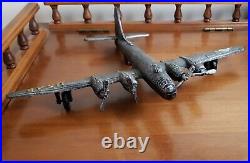
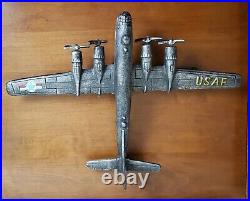
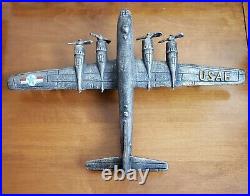
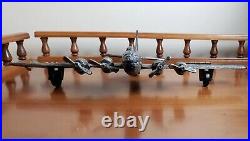
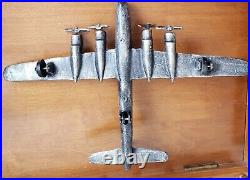

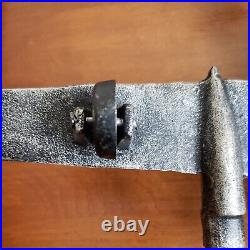
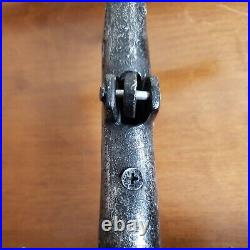

Nonsmoking, Pet Free Environment. The B-29 Superfortress heavy bombers were some of the largest aircraft in service during WW2. Equipped with four engines, they were not only powerful but also very advanced in design. They were equipped with fully pressurized fuselage, central fire control systems, and remotely controlled machine gun turrets. Aircraft this size and complexity were not easy to build, however. Four plants across the United States manufactured various components of the bombers, and sometimes bombers coming out of the factories were sent directly to depots for immediate modifications because of a recent design change. Although the complexity of the design caused a lot of production headaches, the issue that gave the design the biggest problem was the reliability of the Wright R-3350 engines. The engine constantly overheated and burned under stress, particularly during takeoffs, due to insufficient air flow. The problem was never completely resolved before the end of WW2. In general, B-29 pilots like the flight characteristics of the bombers starting in the earlier models. The unboosted controls were heavy and requested strength to operate, but advanced instrumentation made flying and navigation easy. In fact, a B-29 pilot could fly entirely on instrumentation should the pilot choose to do so. In flight, the pilots called for engine and flap settings reminiscent of how a sea captain would call for engine and rudder settings. In combat, although Superfortress bombers were not as heavily armored as other Allied bombers, they possessed one defense that no others could compete with. They were capable of flying at the altitude of 10,200m, just above the service ceiling of most Japanese fighters and just beyond the range of most anti-aircraft weapons. Their fast airspeed also made them difficult to intercept by fighters that could fly that high. The B-29 bombers were initially based in India (starting Apr 1944) and China (starting Jun 1944), attacking Japanese targets in Thailand and the Pacific rim. On 15 Jun 1944, 47 B-29 bombers took off from Chengdu, China and attacked the Imperial Iron and Steel Works at Yawata, Japan, marking the first attack on the Japanese Home Islands since the Doolittle Raid in Apr 1942; one bomber was lost during this mission. A total of 12 such similar bombing missions from India or China on Japan took place before they were transferred to the newly captured/constructed airfields in the Mariana Islands. The first bombing mission from the Marianas took place on 28 Oct 1944 (against Truk), and within a month missions were launched for major Japanese cities such as the capital Tokyo. These firebombing raids by Superfortress bombers devastated the war making capabilities of Japan and demoralized the Japanese population. Among the last WW2 combat missions that employed B-29 bombers were the 6 Aug 1945 atomic bomb attack on Hiroshima by Enola Gay and the 9 Aug 1945 atomic bomb attack on Nagasaki by Bockscar. In WW2, B-29 bombers were used exclusively by the United States Army Air Force in the Pacific Theater. After the war, B-29 Superfortress bombers remained in service with the newly created United States Air Force through subsequent conflicts such as the Korean War. In that conflict, the changing nature of war reduced the number of strategic targets for B-29 bombers to strike and Soviet fighter innovations (namely, the MiG-15 jet fighter designed specifically to combat B-29 bombers) restricted the usefulness of these bombers. The US Navy also employed four of them, but they were restricted to long range search missions only. Aboard, 87 B-29 bombers were lent to the British Royal Air Force to serve as longer range nuclear-capable bombers between 1950 and 1955; two of them made their way to the Royal Australian Air Force for research between 1952 and 1956. Russia and Communist China also had a small number in service. These Russian variants were built after reverse engineering several captured early model B-29 bombers; they served under the designation Tu-4. They were removed from duty in the 1960s. During the active production period of the B-29 design, 3,970 were built.


